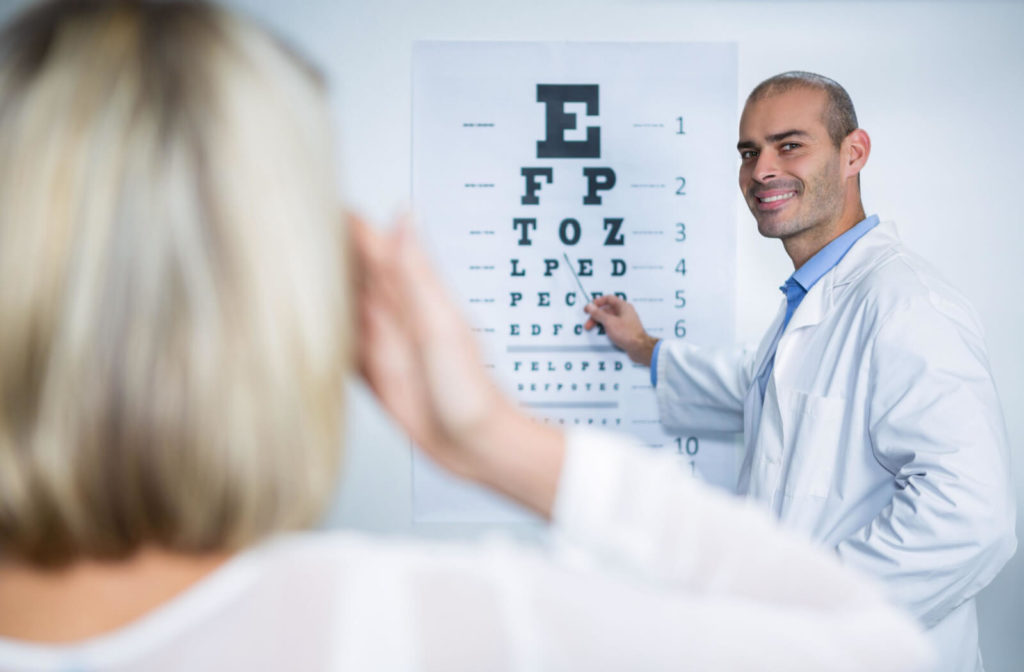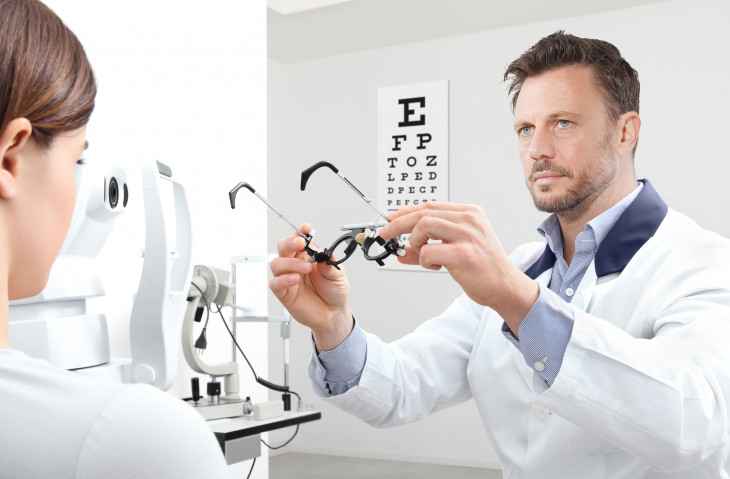The Relevance of Regular Check-Ups with an Eye Doctor Optometrist
The Relevance of Regular Check-Ups with an Eye Doctor Optometrist
Blog Article
Exploring the current Technical Developments in Optometry and What They Mean for Eye Doctors
From the accuracy of Optical Coherence Tomography to the nuanced insights offered by AI-driven diagnostic tools, these advancements are setting new standards in client evaluation and treatment. As these advancements permeate the practice, eye doctors are encountered with the obstacle of accepting these tools to enhance person results.
Technologies in Diagnostic Tools
Progressing the area of optometry, developments in analysis devices have actually reinvented the way eye treatment experts analyze and identify aesthetic impairments and eye problems. The previous decade has seen significant technical developments, allowing even more exact and comprehensive analyses.
Another secret development is the introduction of sophisticated corneal topography systems, which map the surface area curvature of the cornea with accuracy. These devices are especially useful for suitable call lenses and identifying corneal problems. Digital retinal imaging has changed typical ophthalmoscopy, providing in-depth, panoramic views of the retina that help with detailed visual evaluations.
The growth of wavefront aberrometry has actually also been important, enabling the evaluation of refractive errors with unrivaled accuracy (Opticore Optometry). This technology helps in tailoring rehabilitative lenses and improving medical end results for refractive surgical procedures. Jointly, these analysis innovations equip optometrists to supply premium person treatment, ensuring early intervention and customized treatment techniques, inevitably enhancing visual health and wellness outcomes
AI in Patient Monitoring
Structure on the structure of sophisticated analysis devices, the unification of artificial intelligence (AI) in individual management stands for a transformative leap for optometry. AI systems are increasingly employed to enhance performance, precision, and personalization in patient treatment.
Furthermore, AI-driven systems promote streamlined patient interactions and administrative procedures. Automated organizing, virtual appointments, and individualized follow-up strategies not just enhance client contentment however additionally enhance time management for experts. These systems can triage people based on the urgency of their problems, making certain that those in vital need get punctual focus.
Additionally, AI boosts decision-making by giving eye doctors with evidence-based referrals and therapy paths. By incorporating information from electronic health and wellness records, AI tools use insights that educate scientific decisions, reducing the threat of errors and improving individual outcomes. As AI remains to advance, its role in person monitoring will likely expand, improving the landscape of optometric treatment.
Advances in Retinal Imaging
In the realm of optometry, retinal imaging has actually witnessed exceptional technical developments that are boosting diagnostic abilities and client care. Innovations such as Optical Coherence Tomography (OCT) and fundus photography have changed exactly how optometrists evaluate the retina and visualize. OCT, particularly, gives high-resolution, cross-sectional photos of the retina, permitting the detailed exam of its layers. This capacity is indispensable for very early detection and monitoring of conditions like glaucoma, diabetic person retinopathy, and age-related macular deterioration.
Enhanced imaging methods like OCT angiography are further refining diagnostic precision. This non-invasive strategy maps blood flow in the retina, providing vital insights right into vascular wellness without the need for dye injections. Additionally, adaptive optics innovation is being incorporated into retinal imaging systems to remedy ocular aberrations, delivering unmatched photo clearness. Such innovations help with the recognition of minute retinal changes that could signify disease development.
Moreover, innovations in expert system are boosting retinal imaging by making it possible for automated analysis of huge datasets. These systems aid eye doctors in recognizing patterns indicative of pathology, thereby boosting analysis precision and effectiveness. Jointly, these developments are transforming retinal imaging into a cornerstone of modern eye treatment, enhancing outcomes and broadening therapeutic possibilities.
Teleoptometry's Growing Role
Teleoptometry is progressively becoming a vital element of eye care, driven by improvements in electronic interaction and diagnostic tools. As optometry accepts electronic improvement, teleoptometry assists in remote assessments, enabling eye doctors to prolong their solutions beyond standard limits. This is particularly valuable in underserved and country areas where access to specialized eye care is often minimal. By leveraging high-resolution video conferencing and advanced retinal imaging, eye doctors can conduct comprehensive eye exams check this from afar, making certain prompt diagnosis and therapy.
The integration of expert system (AI) more improves teleoptometry, enabling the analysis of aesthetic information and helping in the discovery of ocular problems such as glaucoma and diabetic retinopathy. AI-powered algorithms can quickly interpret complex imaging data, giving eye doctors with important insights that boost scientific decision-making.
Furthermore, teleoptometry sustains connection of care with smooth integration with digital health records (EHRs), enabling optometrists to keep detailed patient backgrounds. When consulting with various specialists., this ensures that patients obtain regular and customized treatment even.
In spite of these benefits, difficulties continue to be, consisting of ensuring data protection and handling person expectations. Nonetheless, teleoptometry stands for a considerable stride in the direction of more accessible, efficient, and patient-centered eye treatment. As modern technology develops, its role is poised to broaden further.

Future Trends in Eye Care
A myriad of ingenious trends is readied to improve the future of eye care, driven by technological advancements and the evolving demands of people. One substantial fad is the combination of expert system (AI) in diagnostics, which guarantees to improve the accuracy and efficiency of eye evaluations. AI formulas can analyze vast amounts of data from retinal images, potentially finding conditions like diabetic retinopathy and glaucoma earlier than standard approaches.
Additionally, tailored medication is acquiring grip in optometry, with hereditary testing educating customized therapy plans. This approach aims to maximize patient outcomes by tailoring interventions to individual genetic profiles. Wearable modern technology, such as clever contact lenses, is additionally on the perspective, offering real-time monitoring of intraocular stress or sugar levels, therefore offering Continued constant understandings right into systemic and eye health and wellness.
The adoption of enhanced reality (AR) and online fact (VR) in training and patient education and learning is an additional arising trend. These technologies supply immersive experiences that can enhance understanding and skills both for eye doctors and clients. As these fads progress, eye doctors have to remain abreast of technical advancements to provide innovative care, ensuring improved person results and complete satisfaction in the dynamic landscape of eye care.
Final Thought

Jointly, these analysis improvements encourage optometrists to deliver remarkable client care, making certain early treatment and tailored treatment approaches, eventually enhancing visual health results.

As these modern technologies proceed to develop, optometrists have to adapt and integrate them right into method, inevitably optimizing operations performance and elevating the requirement of eye care delivered to patients.
Report this page